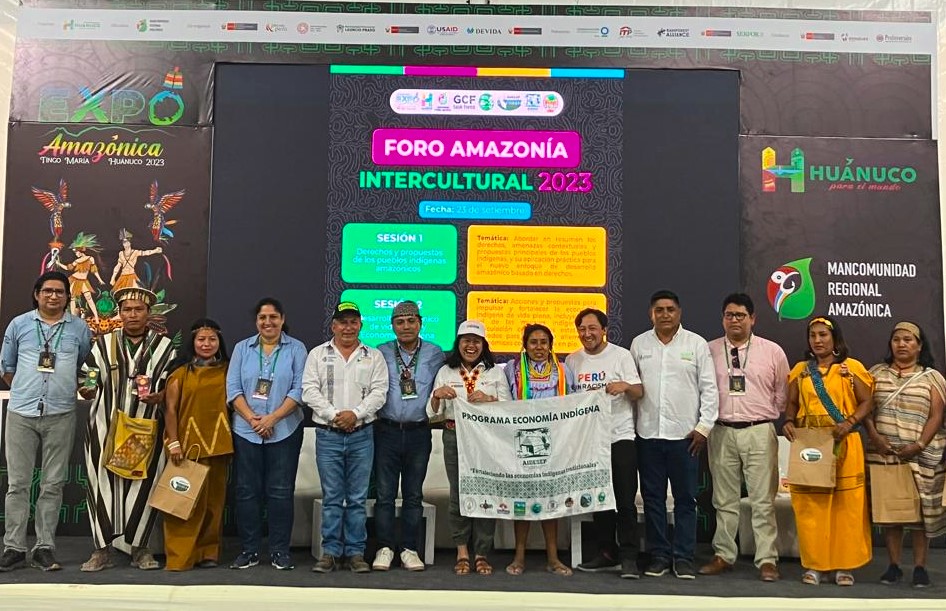From September 21-24, the city of Tingo María in the Huánuco region of Peru hosted the ExpoAmazónica 2023, with over 60,000 people in attendance. The Expo is one of the most important events focusing on products of the Peruvian Amazon, with delegations from Huánuco, Loreto, Amazonas, San Martín, Ucayali and Madre de Díos – all members to the Governors’ Climate and Forests Task Force. Other regions of Peru, including Cajamarca, Áncash, Lambayeque, Lima, and Moquegua were invited and had a special pavilion to display their products and culture.
With 650 stands and an estimate that over 80 million soles (approx. $21.38 million US dollars) were injected into the city’s economy due to the event, the Expo launched with a traditional passacalle, a parade with cultural demonstrations from different regions that started at the city’s botanical garden and ended at Playa Tingo, the exposition site. Throughout the four days of the Expo, thousands of people visited the fair to get to know the products and stands from different regions of the Peruvian Amazon. In addition, multiple panels were held inside the Expo halls, featuring rich discussions among government elected officials, leaders from Indigenous People associations, academia, civil society organizations and civil servants. In the rueda de negócios, business matching meetings occurred non-stop to connect producers, associations, entrepreneurs and financiers.
Throughout the various panels, the operating word was integration. Navigating the complex obstacles that the Peruvian Amazon region faces is better done as a group comprised by the regional governments than by each of them individually. The recent formalization of the Mancomunidad Regional Amazónica (Amazon Region Commonwealth) in the form of a public legal entity reflects the efforts of regional governments to articulate and promote territorial governance, decentralization, and jurisdictional sustainability.
Integration within regions was also highlighted in several panels. The heart of successful jurisdictional approaches to low-emissions development is to convene diverse stakeholders to agree on a common, shared vision for the development of a given region, with regional government steering incentives in different areas towards that goal. Fabiola Muñoz Dodero, the GCF Task Force country director for Peru, summed up this approach in a powerful quote: “It is key to look at territories in their totality. There are decisions do be made to balance economic activity with environmental conservation – and these themes are not separated anymore.” The totality of policies that Huánuco and the Peruvian Amazon regional governments must consider range from technical assistance to providing incentives for non-timber forest products, from land titling and tenure regularization to promoting pisciculture, to name a few.
In sum, the Expoamazónica 2023 served as a window to the many products and efforts underway in the Peruvian Amazon, and it achieved the objective of promoting the sustainability, competitiveness, and integration of the Peruvian Amazon regions.
It also served as a terrific opening to the GCF Task Force’s upcoming annual meeting, which will also take place in Peru, this time in the province of Ucayali, in the second semester of 2024. Stay tuned for more information, including on how to attend!

